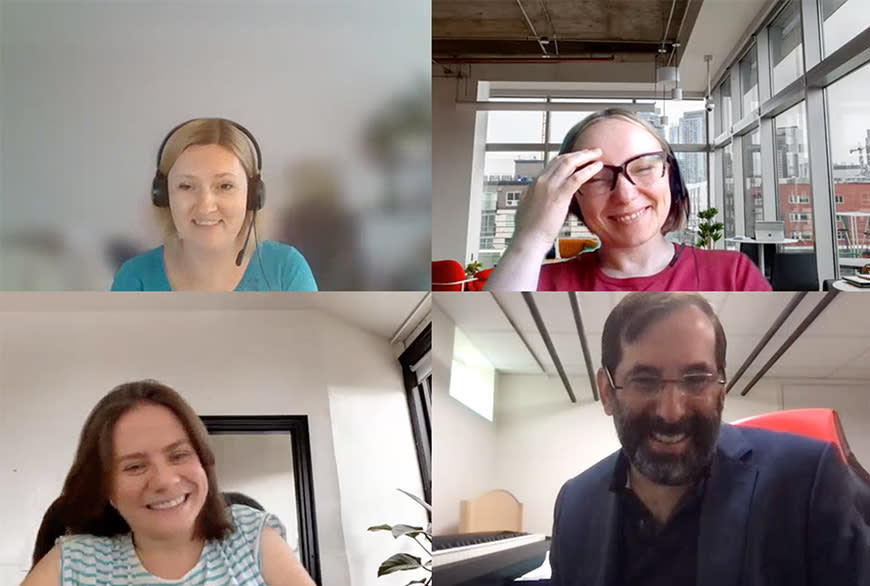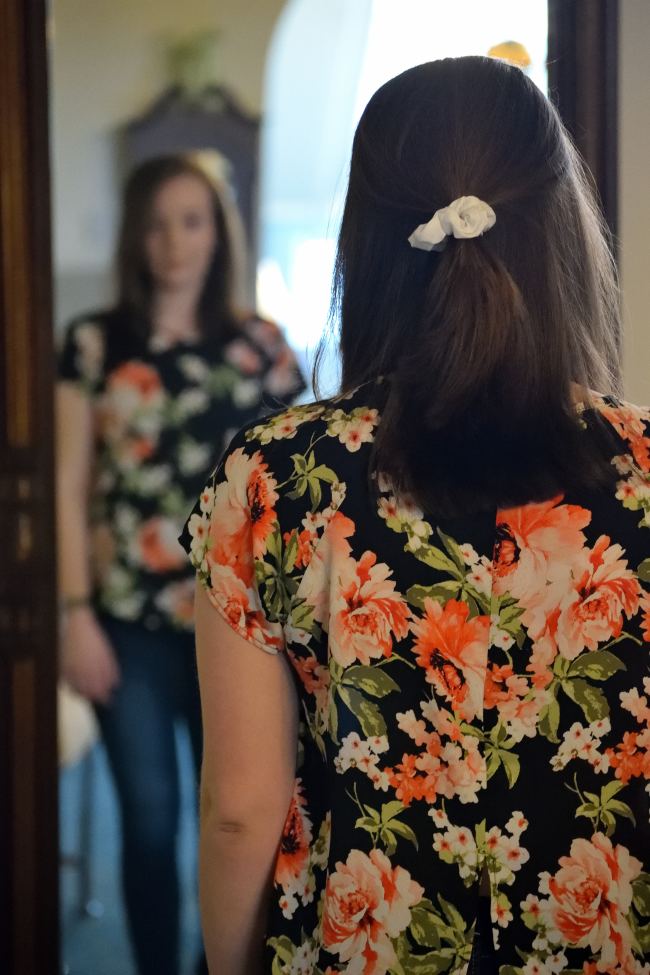
When William Gass published, in his 1996 book Finding a Form, these words: “I think I have a winning smile, but to those on whom my smile is so winsomely conferred, the slightly turned-down corners of its lips convey despair, disgust, disdain—I know not what uninvited attitude,” he wasn’t thinking about Microsoft Teams. He couldn’t have been. Teams blasted off in 2017. But it’s exactly what leaps to mind when I reread them in 2022.
Today we grin at Gass’ pre-pandemic innocence.
We’re living through a revolution in the way we relate to our visages. As you surely recall, back around March 2020, humans everywhere were forced to take a good, regular, unwavering gander at their countenances in context! Covid required us to work in the remote present, virtualizing our daily meetings, which furnished us with a unique and unprecedented ability to see what our faces look like, in real time, while on the job. Yes, we’d observed the rise of the selfie and dove into the sea of social media, but those were largely personal—and optional—experiences. Video chat was now part of everyone’s professional life, a mandatory, all-hands-on-deck phenomenon. (It’s worth noting EPAM has been Remote by Design for years.)
This change is so tremendous, and so new to many, that we have yet to articulate how it has reshuffled the rhythm of interpersonal communications at work.
Though this facial feedback loop is a new and wildly useful part of corporate culture, feedback loops have been a topic of discussion for some time. In a landmark 2011 Wired article, Thomas Goetz wrote about their power (a piece I’ve been thinking about since we did a recent podcast about data loops). Goetz describes the feedback loop process this way: “Provide people with information about their actions in real time (or something close to it), then give them an opportunity to change those actions, pushing them toward better behaviors. Action, information, reaction.”
Teams’ camera-work has helped me become a better, more empathic professional. In the old days of totally off-screen meetings, I had little idea how my face conducted its business while on the clock… and I’m sure my uncensored expressions would sometimes say rude things, even when my big mouth was shut. But after two years of Teams-ing it up, I’ve become hyper-aware when a frowning brow suggests, let’s say, disapproval or incredulity, and I’ve discovered the power to shift my expression in another, more positive direction when necessary. The self-awareness that video chat creates is a good thing. I want to be sufficient in controlling my face-making that, say, my junior colleagues won’t feel judged. I want them to feel encouraged.
My own acceptance of Teams as a useful tool for self-improvement is, I must admit, new. For much of the pandemic era, I was annoyed and resentful for having to flip on the laptop camera to see and be seen by our colleagues. (The idea of having to look at your face all day long is naturally distressing to anyone who was not raised to become an actor or model or lunatic exhibitionist.) I even wrote a blog post in self-defense, advising fellow introverts to use chat to get even with the camera-comfortable extroverts on staff. Perhaps you felt the same way.
What changed my mind?
I've now been on enough meetings, too many meetings, to have retained my camera shy-ness. At this point, it feels like a discourtesy not to show my face. Keeping my camera off almost feels like I’m hiding something. Yes, sometimes it’s early in the morning and I’ve just finished exercising and haven’t taken a shower; at such moments, in our cultural context, it’s perfectly acceptable to put on a baseball cap.
For me, flipping the camera on now is a promise of trust. I think back to a 2016 blog post, in which Gianfranco Zaccai wrote, “People collaborate by trusting each other. The reason we shake hands is to show each other that you don’t have any weapons. We look each other in the eye to ensure that we can work together.” In a world of remote work, of elbow bumping, showing one’s face has for some evolved into the digital handshake.
Of course, intentionally shutting down one's camera can be a strategic move. “I sometimes turn my camera off, to intentionally signal that I am shifting the focus to someone who is playing a more significant role in a meeting,” says Jonathan Lupo, our VP of Experience Design. “Turning your camera off, at key meeting moments, can be a sign of respect and [a way of showing[ empathy, as well.”
In short: I’ve found turning the camera on a good, fast way to bridge social distance. Want to give it a go? Here are some ways to use video chat to become a better teammate:
At your next video meeting, switch on your camera and dare to watch yourself, as much as your humble ego will allow. Pay attention to your expressions when listening to the people you like and respect most and least. Notice what happens to your countenance when someone says something brilliant or something stupid. Alexa doesn’t need to be your only technological mirror!
Going forward, strive to replace your peeved and irked looks with neutral ones, at a minimum. See how much control you can actually exert. Notice if it starts to feel obvious or awkward. If it’s too unnatural, this may not be something for you.
Try recording a video call, review the playback, and make notes about your most extreme expressions, what caused these expressions, and why (the Teams transcription function is useful here). The great thing about Teams is that it can document all our fleeting eye rolls and involuntary smirks, our empathy failures and empathy fatigue, to use as reminders to be more positively professional.
If you’re hesitant to go on camera, try turning on the laptop camera for short intervals. Perhaps you can conduct an entire day’s worth of meetings with the camera on. (This would give you sufficient time to prepare the way you and your background will look.) Or, if you’re feeling really adventurous, turning on the camera one meeting every day for a week. Baby steps.
Am curious to hear about how being on-camera has, or has not, improved your professional demeanor. (I can easily imagine that it’s been consistently terrible for some people.) If you’ve got a screen time story, let’s talk. As Ben Jonson said, way back in the 17th century: “Speake that I may see thee.” Oh wait…




